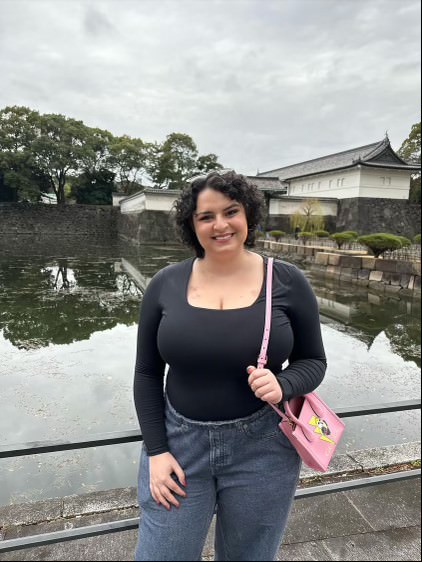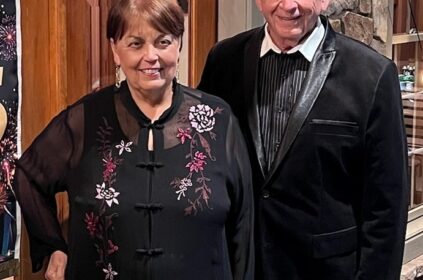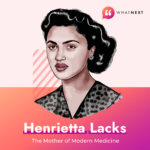When her knee suddenly began aching, Mia Sandino chalked it up to “too much activity.”
She was 19 after all and had just begun her freshman year at the University of Washington as a pre-med student with a goal of studying pain management. The campus had hills that Mia traversed on her way to class; in her sorority house, she climbed every day up and down from the top-level bunk.
To her, it made sense that her knee hurt—she must have aggravated an old MCL injury. That’s what Urgent Care and a local doctor that Mia saw in April 2018 thought, too. She shares:
“I told the doctor I was in a lot of pain. My knee was bruised and it hurt when I wasn’t moving. He asked me about campus life and if I was going to parties, and told me I was continuously reinjuring myself. He never took scans. In his defense, who would think that this healthy, strong 19-year-old had a huge tumor? I also had that sense of invincibility you feel as a young adult. Cancer never even crossed my mind.”
In late 2018, Mia was diagnosed with metastatic osteosarcoma, a rare form of pediatric bone cancer that typically begins in the long bones. This began her six-year cancer journey that is bittersweet, complex, and, as Mia puts it:
“Has taken over my life in beautiful and chaotic ways.”
Although Mia learned that she was incurable in 2022 and no available treatment options will work with her mutation, she has remained resilient and grateful for the community she discovered through her cancer journey, especially MIB Agents, a leading pediatric osteosarcoma nonprofit.

Recently, Mia spoke with WhatNext about her experiences living with osteosarcoma, her work with MIB Agents, the importance of mental health support, and how the osTEAo podcast—co-hosted with best friend Camille—is adding to the narrative on AYA cancer.
The Diagnostic Odyssey
Nine months after her knee pain began, in September 2018, Mia was home and visiting the same physician who had seen her since she was four years old. It was abnormal, the physician said, for someone with such a high pain tolerance to feel constant pain when not moving. It was time for an x-ray. Sure enough, says Mia:
“There was a 2.5 inch tumor breaking through my tibia. I had been walking on a broken tibia for at least six months according to the damage.”
Mia’s case, diagnostically speaking, was complicated. The tumor makeup looked much more like a giant cell tumor, so doctors initially told Mia that it was most likely benign. A confirmatory bone biopsy from UCLA showed the same. The next step was removing the tumor and adding bone cement into the gaps.
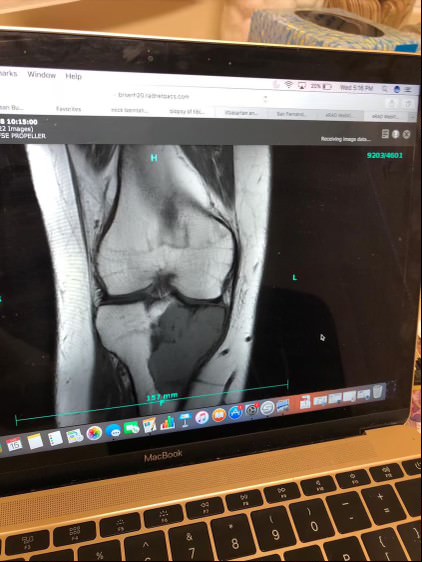
After the surgery, however, a pathologist found osteosarcoma cells on the back half of the tumor. The orthopedic surgeon called her directly from her personal number on a Friday afternoon—never a promising sign. Mia’s stomach churned as she picked up, not realizing she’d hear such life-changing news:
“It’s a very traumatic moment when you hear, ‘You have cancer. You need chemotherapy for at least nine months. You’re going to have to miss school next semester and you need to meet with an oncologist as soon as possible.’ Nobody expects to have a rare cancer at 19. It was very difficult to cope with the fact that I had this aggressive form of cancer and didn’t know what the next year would look like.”
Prior to her diagnosis, Mia had already struggled with anxiety and depression. Hearing her diagnosis initially sent her into a tailspin. It was hard to conceptualize the invasiveness of the treatment she was about to embark on. Even though she had a therapist, the therapist had no experience with AYA cancer, which made Mia feel isolated and alone. As she reflects on her diagnosis, she says:
“Practitioners should offer services like having an in-unit psychologist who specializes in working with AYA cancer communities so they feel more seen and heard. This should be offered from the first appointment to help people with cancer cope. I’ve now been working with my therapist for a while and it has been invaluable. There are still times when depression lingers, but you can only have those days so many times. We need to break out of that, and the best way is to work with a professional to allow you to have the tools to understand what you have, what you’ll go through, and how you can make your life as manageable as possible in the face of what feels impossible.”
What is Osteosarcoma?
Osteosarcoma is a cancer that manifests in the bones, often in areas where the bone is growing quickly and during growth spurts. While osteosarcoma is a rare cancer, it is the most common form of bone cancer, especially in children and young adults. Osteosarcoma is more common in males than females, as well as in people of African American or Hispanic/Latino descent. Your risk of developing this cancer is highest between ages 10 to 30.
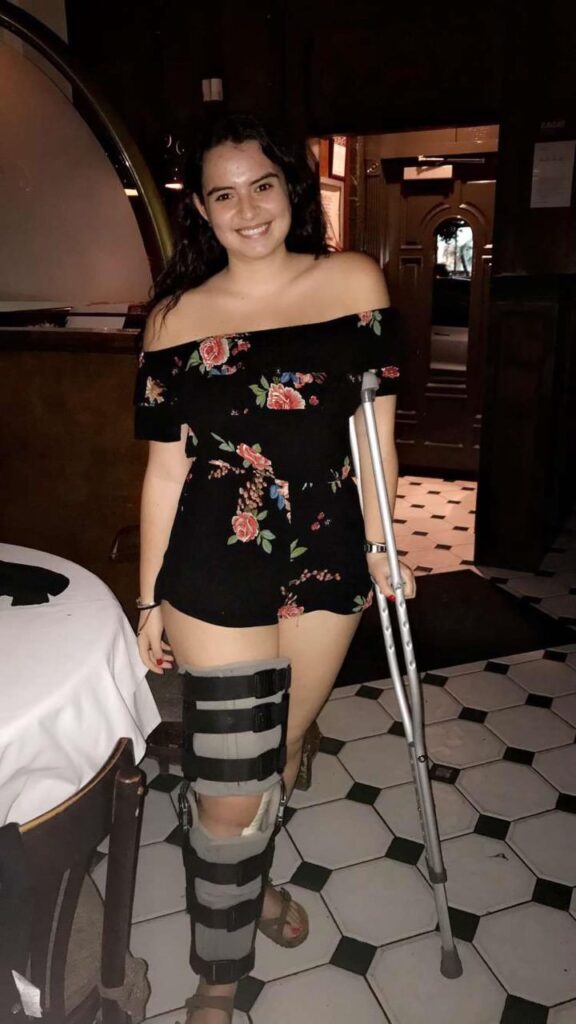
Symptoms of osteosarcoma may change depending on where the tumor is located. Common symptoms can include bone pain, bone fractures without a known cause, limping, limited joint movement, swelling, or redness around the affected area. But physicians should be aware of signs of osteosarcoma in the AYA (adolescents and young adults) population, shares Mia:
“If there’s bone pain and it hurts when not moving or when you are moving, a lump, or bruising, let’s think AYA cancer. I really cannot stress enough how crucial education and awareness is so this cancer does not metastasize. Once it metastasizes, and traditionally to the lungs, it becomes much more difficult to treat and more difficult for the patients and families.”
A physical exam with blood tests, CT scans, MRIs, PET scans, bone scans, and x-rays may all be used during the diagnostic process. Says Mia:
“An x-ray showed my tumor the best. That isn’t nearly as expensive or invasive as a CT or MRI, which could make it an option for some patients. I just want patients and professionals to know that anybody with serious or severe ‘growing pains’ should get a scan. Listen to patients, because maybe it isn’t just growing pains.”
In addition to surgery and chemotherapy, managing osteosarcoma long-term can be challenging. Mia currently undergoes three full-body PET scans each year and sees an interventional radiologist who freezes her metastases. But, she explains:
“The sooner you tackle the most pressing issues with your health, the better your survival outcome.”
Finding MIB Agents
In search of support, Mia’s mother scoured Facebook for groups or information. She stumbled across the MIB Agents Osteosarcoma Alliance Facebook page—and was immediately hooked. MIB Agents had just announced that they were looking for new members for a junior advisory board, and Mia’s mom thought that Mia would be a great candidate. When Mia interviewed with MIB Agents, she felt…home:
“These are people who made me feel understood. They were making a difference in osteosarcoma and patient support, and I knew I wanted to get involved. I joined the Junior Advisory Board, attended our FACTOR Conference, and that snowballed into the ride-or-die MIB Agents supporter and VP of the Junior Advisory Board I am today!”
MIB Agents is a leading pediatric osteosarcoma nonprofit that is dedicated to Making It Better for the osteosarcoma community—including patients, researchers, families, healthcare professionals, and industry partners—through programs, education, and research. And it does just that through its amazing resources, says Mia:
“Our fundraising leads to grants for researchers and we can fund that research. And the MIB Agents Handbook offers such comprehensive information—I remember reading it the first time and thinking, ‘Wow, I wish I had this from day one.’ MIB Agents has also provided much more awareness about osteosarcoma in the general population. My friends are now able to educate others on what I’m going through based on our resources and social media. It’s such a great organization that cares about people and wants to make this extremely brutal disease slightly easier. We want to make the unbearable as bearable as possible.”
Empowering connections within the community is also a central tenet of MIB Agents’ approach:
“The best way to support mental health in cancer patients is to build a thoughtful, helpful community. MIB Agents has done just that. Before MIB Agents, I hadn’t felt seen, heard, or understood. With MIB Agents, there are so many ways to get involved and so many connections to providers and other patients. I love Ambassador Agents, where you can speak with survivors and families about what you go through. Gamer Agents provides gaming and relationships for those in active treatment, their siblings, and survivors. When it comes to my personal experience, MIB Agents has helped me build a community with other like-minded individuals who have faced the same side effects and difficult surgeries. We’ve supported each other through NED (no evidence of disease) and relapses. I practice gratitude, and I’m grateful for my cancer journey because without it, I wouldn’t have had this incredibly beautiful support system that keeps me smiling and thriving even on days I don’t want to. It’s such an honor to be part of this.”
osTEAo
Alongside co-host Camille W, Mia assisted in launching the osTEAo podcast, designed to “spill the tea” on cancer to the AYA community—and anybody else who is interested! The podcast covers topics across the scope of AYA cancer, from dating and intimacy to survivor’s guilt and everything in between.

One particularly impactful topic is scanxiety, the sometimes debilitating stress and anxiety that happens around cancer scans in the stressful “watch and wait” period. As Mia describes it:
“I describe it to my friends as what Vin Diesel says in Fast and Furious that he lives his life a quarter mile at a time. For people with osteosarcoma, we’re living every scan or procedure at a time. It’s limiting and hard to plan for the future. We also did a music episode and one of the songs I added was ‘Never Really Over’ by Katy Perry. Every scan that you get is going to bring that heavy sense of dread. For people looking to escape scanxiety, I recommend doing whatever you can to get out of your head. Live your life and make the best out of the moments you have.”
Another topic that resonated with the community was “Out on a Limb,” which talked about traveling with a limb salvage or amputation. While you’ll have to watch the entire episode to get all of the tips, Mia shared that some lessons learned from lived experiences include:
- Get travel insurance.
- If you’re using a wheelchair or have never been to the specific airport before, go early to acclimate.
- Make sure to request a bigger vehicle if getting Uber or Lyft.
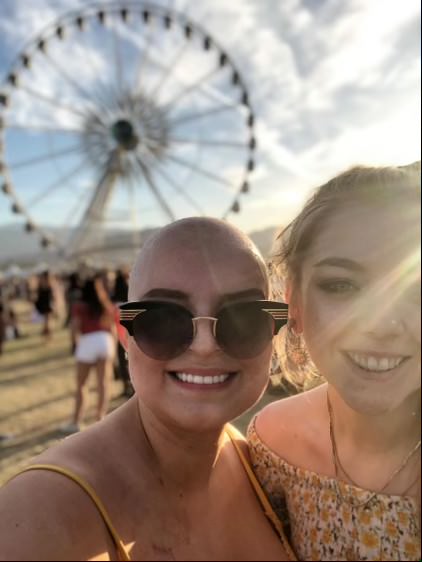
At the end of the day, Mia hopes that the osTEAo podcast can improve mental health by teaching people that they are not alone and that they can advocate for themselves. She also wants people with cancer to remember that, at the end of the day, they are not their diagnosis:
“As cancer patients, our lives are not always doom and gloom. We are not just sickly, wasting away people. We hav moments of greatness, and we deserve to show the world.
interview oncology osteosarcoma patient stories rare cancer rare community profiles series
Last modified: January 23, 2025
